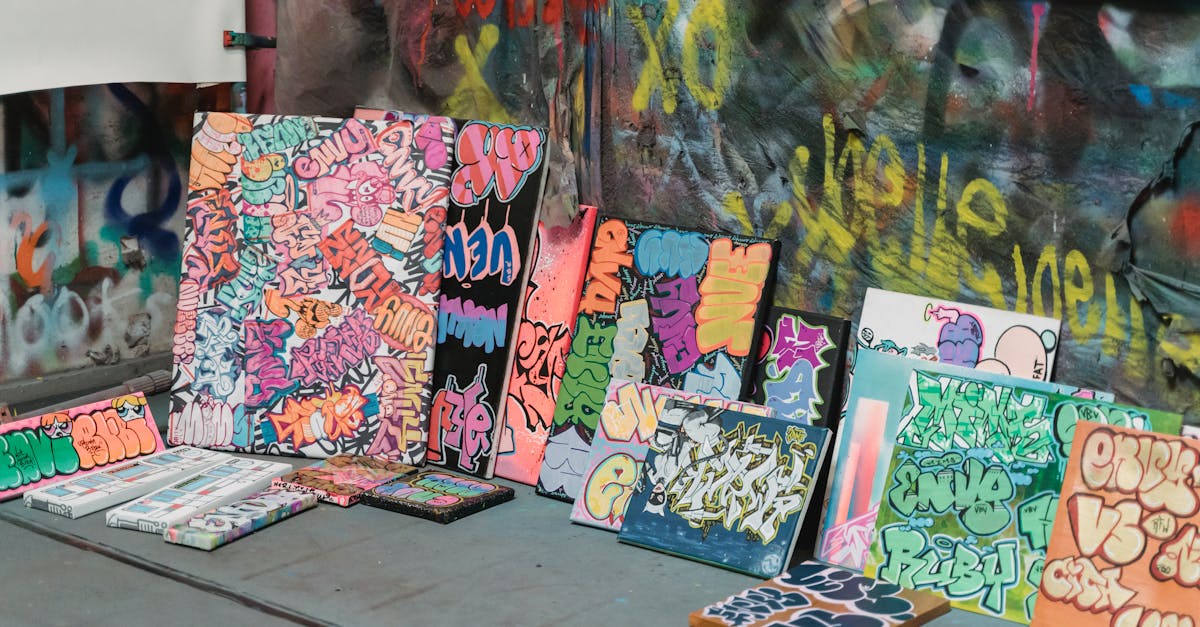Do Artists Pay to Exhibit in Galleries? Hidden Costs, Gallery Types, and What to Watch Out For
When I first started exploring the art world I was surprised by how many hidden costs artists face just to share their work. One question kept popping up in my mind—do artists actually have to pay to exhibit in galleries? It seems like a simple thing but the answer isn’t always straightforward.
Galleries come in all shapes and sizes and their policies can be just as varied. Some artists find themselves paying fees while others get invited to exhibit without spending a dime. Understanding how this works can make a big difference for anyone hoping to break into the gallery scene.
Understanding Gallery Exhibition Models

Gallery exhibition models set the foundation for how artists participate and what costs they take on. I navigate these models by identifying the gallery type and the agreement terms offered.
Types of Galleries and Artist Agreements
Gallery types and artist agreements shape the artist’s role and expenses:
- Commercial Galleries: I see these profit-driven spaces (examples: Gagosian, Pace) usually operate on a commission basis, taking 40-50% from art sales.
- Cooperative Galleries: I interact with these artist-run spaces (examples: A.I.R. Gallery, Arc Gallery) where artists split costs, pay membership fees, and collectively manage the space.
- Vanity Galleries: I notice these venues charge upfront fees (typically $1,000-$10,000 per exhibition) to artists with no sales commission, and often accept most applicants.
- Institutional or Museum Galleries: I find these public or nonprofit spaces (examples: MoMA, LACMA) usually invite artists, cover most costs, and may offer stipends or production support.
Artist Agreement Model Table
| Gallery Type | Fee Structure | Typical Arrangement | Example |
|---|---|---|---|
| Commercial | Sales commission (40-50%) | No upfront fee | Gagosian, Pace |
| Cooperative | Membership/shared fees | Shared costs | A.I.R. Gallery, Arc Gallery |
| Vanity | Upfront exhibition fee | Artist pays full fee | Agora Gallery, Gallery 104 |
| Institutional/Museum | No fee, potential stipend | Invitation only | MoMA, LACMA |
Common Costs Associated With Exhibitions
- Application or Submission Fees: I may pay $20-$100 when applying for group or juried shows.
- Rental Fees: I encounter rental costs for event duration, ranging from $500-$5,000 in cities like New York or Los Angeles.
- Commission Fees: Galleries often deduct a commission per artwork sold, commonly 30-50%.
- Shipping and Insurance: I cover expenses to transport and insure my work, which adds $100-$2,000+ depending on size, distance, and carrier.
- Promotional Fees: Some galleries require artists to contribute $100-$1,000 towards marketing, printing catalogs, or opening receptions.
Typical Exhibition Expenses Table
| Cost Type | Price Range | Notes |
|---|---|---|
| Application Fee | $20 – $100 | Per entry, non-refundable |
| Rental Fee | $500 – $5,000 | Duration- and city-dependent |
| Gallery Commission | 30% – 50% of sales | Deducted after sale |
| Shipping/Insurance | $100 – $2,000+ | Varies by artwork, location, carrier |
| Promotional Costs | $100 – $1,000 | For catalogs, marketing, events |
Do Artists Pay to Exhibit in Galleries?

Many artists pay fees to show work in galleries, especially where models involve upfront costs. Others exhibit without direct payment, with compensation structured through sales commissions or institutional support.
Pay-to-Play Galleries Explained
Pay-to-play galleries require artists to pay fees for space, promotion, or both. I see these fees range from $1,000 to $10,000 per exhibition, often regardless of sales potential. Vanity galleries like Agora Gallery and Gallery 104 typically follow this model. Artists secure exposure in professional venues, though risks include low sales and limited curatorial selection. These spaces sometimes offer promotional services or publication in catalogues as part of the fee.
| Gallery Type | Upfront Fee Range | Example Galleries | Additional Costs |
|---|---|---|---|
| Pay-to-Play | $1,000–$10,000 | Agora, Gallery 104 | Promotion, catalog, shipping |
| Cooperative | $500–$2,000/year | A.I.R., Arc | Membership dues, committee |
| Commercial | None | Gagosian, Pace | Shipping, promotional sharing |
| Institutional/Museum | None | MoMA, LACMA | Usually covered by institution |
Commission-Based Arrangements
Commission-based arrangements define many commercial gallery relationships. I notice galleries like Gagosian or Pace sell art and retain 40-50% commission from each sale. No fee is charged for hanging or application, but artists handle shipping, insurance, or sometimes promotion. When a sale occurs, both parties share revenue, motivating the gallery to facilitate client interest and art transactions.
| Arrangement Type | Artist Upfront Cost | Gallery Commission | Typical Extra Artist Costs |
|---|---|---|---|
| Pay-to-Play | High | None | Shipping, insurance, promotion |
| Commission-Based | None | 40–50% of sales | Shipping, production, occasional PR |
| Museum/Institutional | None | None | Minimal, often reimbursed |
Pros and Cons of Paying to Exhibit

Paying gallery fees shapes how I access exhibition spaces and reach new audiences. The impact varies by gallery model and payment structure, changing my exposure and costs.
Potential Benefits for Artists
Paying to exhibit gives me access to gallery spaces that I might otherwise not secure, especially in competitive art cities. When I invest in rental or promotional fees, I often gain:
- Guaranteed Exhibition: Securing my spot in the gallery schedule, with examples including many vanity galleries in New York and London.
- Control Over Display: Influencing curation and installation, since payment usually grants me greater say in how my work appears.
- Networking Opportunities: Connecting with buyers, critics, and other artists at openings and events.
- Professional Portfolio Development: Adding reputable gallery names and high-quality exhibition documentation to my CV.
Example Table: Benefits by Gallery Type
| Gallery Type | Guaranteed Exhibition | Artist Control | Portfolio Value |
|---|---|---|---|
| Vanity | Yes | High | Moderate |
| Cooperative | Yes | High | Moderate |
| Commercial | No | Low | High |
| Institutional | Invitation Only | Low | Very High |
Drawbacks and Controversies
- Significant Financial Risk: Upfront fees ($1,000–$10,000) create barriers for emerging artists without guaranteed sales, as seen in vanity galleries.
- Limited Critical Credibility: Curators and collectors sometimes view pay-to-play shows as less prestigious, which can impact my long-term reputation.
- Exploitative Practices: Some galleries focus on artist fees over sales or quality, not curating selectively; this may limit genuine career advancement.
- Uncertain Audience Reach: Paid exhibitions don’t always deliver strong promotional support or visitor numbers, which restricts my exposure.
Example Table: Drawbacks by Payment Model
| Payment Model | Financial Risk | Prestige Impact | Curatorial Support |
|---|---|---|---|
| Pay-to-Exhibit | High | Low-Moderate | Low-Moderate |
| Commission-Based | Moderate | High | High |
| Institutional | Low | Very High | Very High |
Tips for Artists Navigating Exhibition Costs
Gallery exhibition costs impact my decisions as I explore opportunities to show my work. I’m careful to assess expenses, benefits, and risks before committing.
How to Evaluate a Gallery Opportunity
I compare gallery models, costs, and exposure opportunities using clear criteria:
| Factor | Commercial Gallery | Cooperative Gallery | Vanity Gallery | Institutional Gallery |
|---|---|---|---|---|
| Upfront Fees | None | Annual/monthly dues | $1,000–$10,000 per show | None |
| Commissions | 40-50% | Varies/Lower | None | None or minimal |
| Promotion | Gallery handles | Shared/artist-driven | Limited by gallery, artist pays more | Handled by institution |
| Exhibition Quality | Curated, selective | Community-based | Guaranteed, less selective | High, selective |
| Exposure | Art market focused | Local/regional | Varies, less critical acclaim | Major art world visibility |
I check the gallery’s reputation by reviewing past exhibitions, artist lists, press coverage, and sales history. I clarify fee breakdowns—itemized receipts for rental, promotion, or other services reduce ambiguity. I request clear contracts to confirm commission percentages, handling of unsold works, and insurance. I attend openings or talk to previous artists to assess gallery professionalism and audience reach.
Red Flags to Watch Out For
I recognize signs of problematic or predatory gallery operations:
- Demanding large upfront fees without transparent service breakdown or proven audience
- Using high-pressure tactics or guarantees of fame or sales
- Lacking detailed written agreements or contracts
- Minimal evidence of past successful exhibitions or sales
- Poor or unclear communication about logistics
I cross-reference feedback on artist forums and check independent gallery review sites for recurring complaints relating to payments, professionalism, or integrity. I steer away if a gallery offers little verifiable information, consistently solicits mass submissions, or refuses to clarify financial terms.
Table data guides my evaluation of exhibition models while transparent evaluation strategies and warning signs help me navigate potential exhibition costs effectively.
Conclusion
Navigating gallery exhibitions as an artist can feel overwhelming with the variety of costs and models out there. I’ve learned that being proactive—researching galleries, understanding their terms, and asking the right questions—makes a huge difference in protecting both my art and my finances.
It’s crucial to trust my instincts and stay informed about the industry’s best practices. By staying vigilant and prioritizing transparency, I can make choices that support my growth and keep my creative journey on track.
Frequently Asked Questions
Are artists required to pay to exhibit their work in galleries?
Not always. Whether artists pay to exhibit depends on the gallery type. Some galleries take a commission from sales instead of charging fees, while others may require upfront payment or shared costs. It’s important for artists to ask about fees and review contracts before agreeing to show their work.
What are the main types of galleries, and how do they charge artists?
The main types are commercial, cooperative, vanity, and institutional galleries. Commercial galleries work on commission, cooperative galleries share costs among members, vanity galleries charge upfront fees, and institutional galleries usually cover costs and may offer support to selected artists.
What common costs might artists incur when exhibiting in a gallery?
Artists may pay application fees, rental fees for space, commission percentages on sales, and cover shipping and insurance. Promotional costs may also arise. These expenses can range from a few hundred to several thousand dollars, depending on the gallery and location.
What is a “pay-to-play” or vanity gallery?
A “pay-to-play” or vanity gallery requires artists to pay upfront exhibition fees, sometimes between $1,000 and $10,000, regardless of whether any art is sold. These galleries generally offer guaranteed exhibition spots but may not offer much curatorial support or sales assistance.
Are there any benefits to paying exhibition fees?
Yes, paying fees can guarantee a space to show your work, more control over presentation, networking opportunities, and the chance to build your exhibition history. However, you should weigh these benefits against potential financial loss and possible lack of curatorial prestige.
What are the risks of paying to exhibit art?
Risks include financial loss if you don’t sell any work, lower critical credibility within the art community, and limited curatorial or sales support from the gallery. Some pay-to-exhibit galleries may not be reputable, so artists should research before committing.
How do commission-based galleries operate?
Commission-based galleries don’t typically charge upfront. Instead, they take a percentage of sales (usually 40-50%) from artworks sold. The gallery is motivated to sell your work, but artists are often responsible for additional costs like shipping and insurance.
How can artists decide if a gallery opportunity is worth the cost?
Artists should compare exhibition costs, commission rates, and exposure potential. Check the gallery’s reputation, past exhibitions, and sales history. Ask for detailed contracts and itemized costs, and evaluate whether the gallery aligns with your career goals.
What red flags should artists watch for when considering a gallery?
Look out for large, unexplained upfront fees, lack of transparency, high-pressure tactics, or no written contract. Research the gallery’s background and read reviews on independent art forums to ensure legitimacy.
Where can artists find out more about a gallery’s reputation?
Check the gallery’s website for past shows and artists, read reviews on art forums and sites like Google or Yelp, and seek feedback from other artists. Connecting on social media can also provide useful insights into the gallery’s professionalism and standing.
